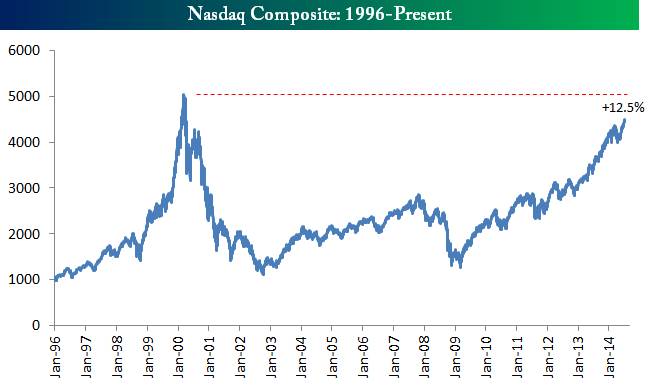|
If you were an investor back in 2002, take yourself back to that October and try to remember your sentiment towards the Nasdaq Composite at that time. Did you think the bubble highs above 5,000 would be seen again in your lifetime?
4,285 days have now passed since the Nasdaq Composite made its closing low in 2002. The index experienced another crash of 55% during the financial crisis, but since its 2002 lows, the Nasdaq is now up 302%. During the current bull market that began on March 9th, 2009, the Nasdaq is up 253.6%. The index is also now 57% above its pre-financial crisis highs that were made on October 31st, 2007.
The most amazing stat for the Nasdaq, though, is that it is now just 12.5% away from its dot-com bubble closing high from March 2000. Yes, the index needs to gain just 12.5% to eclipse those prior highs that just a few years ago seemed light-years away for many. Just since its lows this April, the Nasdaq is up 13.7%, so another rally like we've had over the last 2+ months, and we'll be at new highs. Pretty remarkable, but also kind of scary.

www.bespokeinvest.com
Link to the report
|